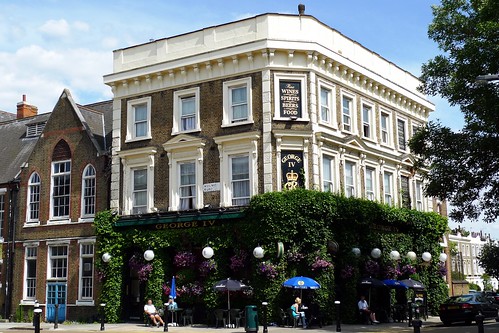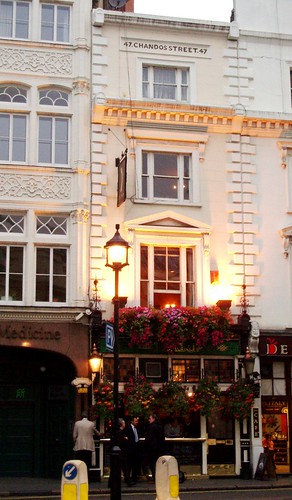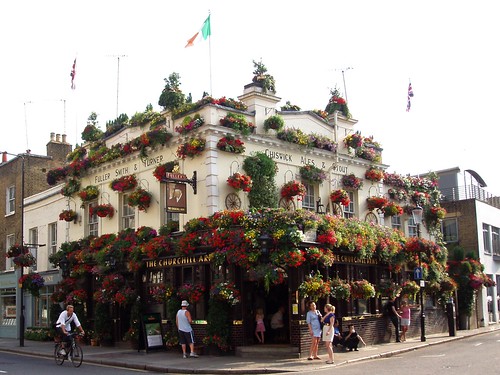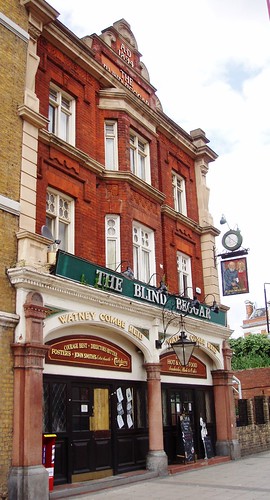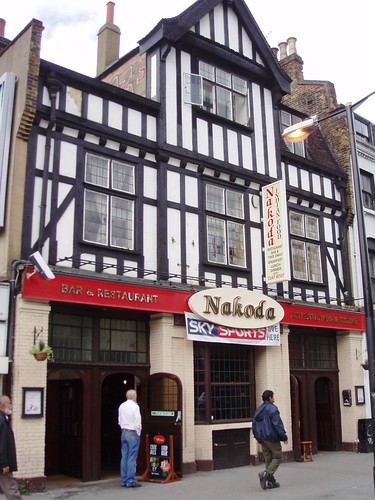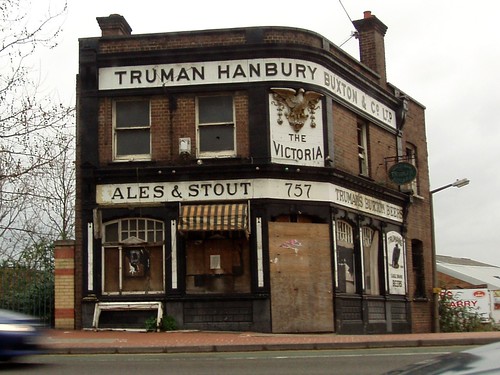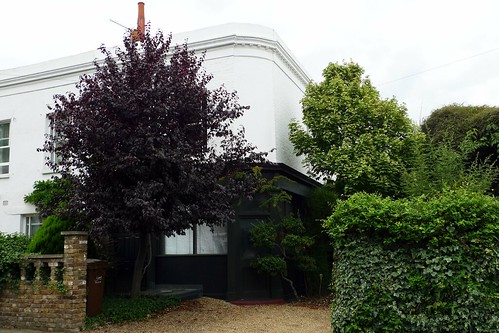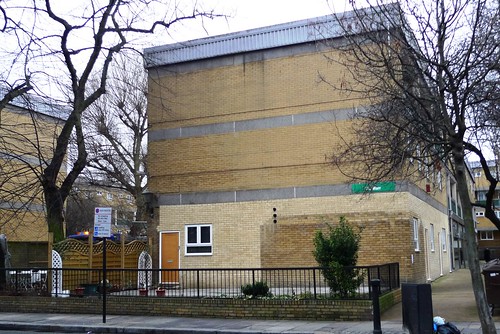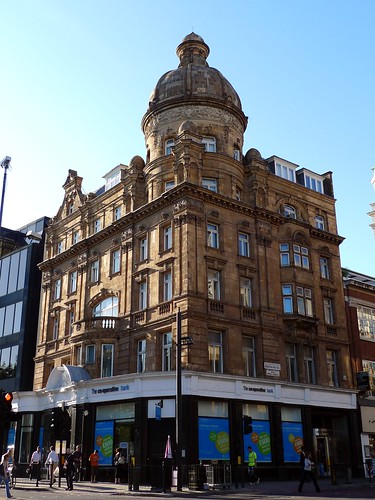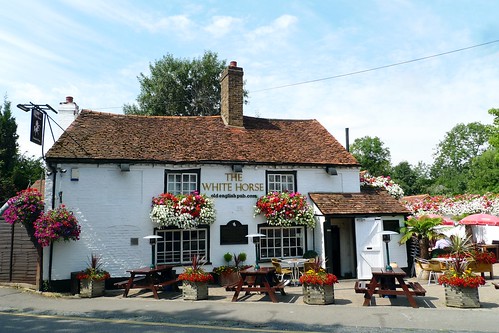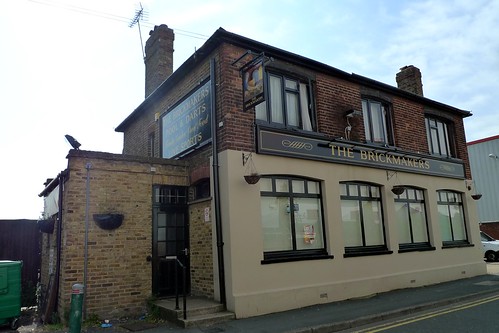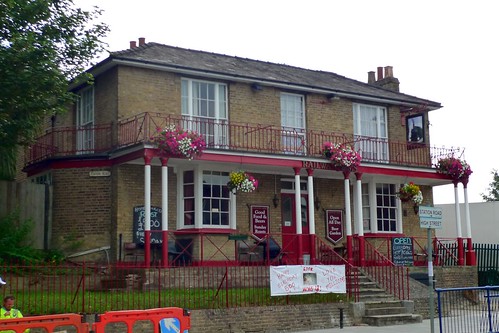There are of course many pub names that honour real people, often heads of state, key military figures or members of the royalty. There could easily be hundreds of entries, about each and every one of these people, but I’ve chosen to focus here on pubs named after non-literary figures1 with strong connections to London (who are named in full, and without aristocratic title, just to keep the list shorter). Links to the relevant Wikipedia entries are given with the name, for those interested in learning more about them.
i. Sir Michael Balcon, 1896-1977
A film producer famous for his work at Ealing Studios, Balcon was born in Birmingham and relocated to London in his 20s. He was hired to head Ealing Studios in 1938, and it is his work with them which has led to his lasting reputation, responsible for putting out a number of memorable comedy films during the 1940s and 1950s particularly. The JD Wetherspoon pub chain has a habit of naming its pubs after notable local figures (a few others feature in this post), and their pub in Ealing W5 is no exception.
ii. Sir Colin Campbell, 1792-1863
This Glasgow-born soldier may have been Scottish, but the pub commemorating his name in Kilburn NW6 is now an Irish boozer.2 As a military commander, he distinguished himself particularly in the Crimea, repulsing a Russian attack in Balaklava with his famous “thin red line” of soldiers. Although the 1st Baron Clyde appears to have had no personal connection to Kilburn, the pub may have been set up by one of his soldiers and named in his honour (there are still many Marquis of Granby pubs all over London, named for similar reasons).
iii. George Canning, 1770-1827
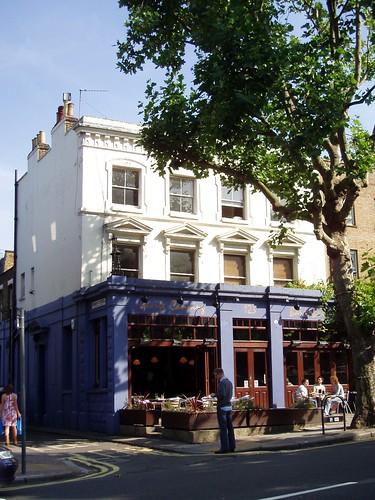

Figure 70. The George Canning (Denmark Hill SE5). It’s been renovated since this photo was taken.
A politician for most of his life, and even briefly the Prime Minister (for the shortest period of time of any PM), Canning was born in Marylebone to Irish parents, and educated at Eton and Oxford (as have been so many politicians). He spent far more time as Foreign Secretary, involved heavily in the Napoleonic Wars. His links with the area of the two pubs in London named after him (one in Denmark Hill SE5 (fig. 70), the other — since renamed as Hootananny — in Brixton SW2) aren’t exactly very clear, as he seems not to have had any links to South London (he lived mainly in central London, as might be expected, and died in Chiswick).3
iv. Charlie Chaplin, 1889-1977
A comedic actor of the silent era, and one of the most famous film stars of his time. He was born in Walworth, and through his parents became a music hall entertainer very early in his life. He relocated to the United States in his 20s and it’s for his work there that he is best remembered, though he was forced to relocate to Europe late in his life due to his political leanings. However, his connection with the area of his birth is remembered by the name of a local pub (attached to the Elephant and Castle Shopping Centre).
v. Herbert Chapman, 1878-1934

Figure 71. The Herbert Chapman (Holloway N7).
Born near Rotherham, but strongly linked to Arsenal (the team’s stadium still based in the area near the pub bearing Chapman’s name, fig. 71) by virtue of having been its manager for ten years until his death. His playing career was undistinguished, but he was an influential manager and brought Arsenal its first ever FA Cup and a couple of League titles, setting them up by the time of his unexpected death as the dominant team of the 1930s.
vi. Thomas Cubitt, 1788-1855
Born in Buxton, Cubitt came to become the leading master builder in London by the mid-19th century. Though he was responsible for swathes of Bloomsbury, some of the Victoria Embankment, and part of Buckingham Palace, one of his greatest achievements was building much of Belgravia. It is for this work that a Belgravia gastropub commemorates him.4
vii. Nell Gwyn, 1650-1687

Figure 72. The Nell Gwynne (Covent Garden WC2), using an alternate spelling of her name.
A prominent early English actress. It is not clear where she was born, but she grew up in Covent Garden, where nowadays a pub with her name (fig. 72) adjoins a local theatre. She became a star of restoration comedies in the 1660s, though her theatre career came to an end when she became a mistress to the King, Charles II.
viii. Eva Hart, 1905-1996
Born in Ilford, Hart lived and died in Chadwell Heath RM6, where a (JD Wetherspoon, again) pub is named in her honour. As a young girl, she was a survivor of the sinking of the RMS Titanic in 1912 and was prominently involved in related activities for most of her long life.
ix. Marie Lloyd, 1870-1922
Another figure from the theatrical world, Lloyd was a famous music hall singer, born Matilda Wood in Hoxton (in the Borough of Hackney). She gained popularity from her teenage years on, and was known for her racy double-entendre-filled songs. The Hackney Empire, a theatre built as a music hall in 1901 (and at which Marie Lloyd performed), was extended between 2001-04, and its new bar was named after Marie Lloyd.5
x. Sir John Morden, 1623-1708
A merchant, Member of Parliament and philanthropist, born in London. Unlike some of the other figures listed here, Sir John did have a connection with the area where the (former) pub named after him is located, having in 1695 established Morden College in nearby Blackheath, which continues to exist even now as a residential care charity.
xi. Sir Robert Peel, 1788-1850
Born in Bury, Peel served as a Tory MP in a number of northern constituencies (including a few ‘rotten boroughs’). He was Home Secretary and twice Prime Minister (1834-35 and 1841-46), but is best remembered for creating the modern police force when he founded the Metropolitan Police in London in 1829. He was an opponent of George Canning (see above), and resigned as Home Secretary when Canning came (briefly) to power.
As a prominent figure in London history, a number of pubs were named after him (others not pictured here are in Walthamstow E17 and Kingston KT1), though none is particularly salubrious. The one on Bishopsgate (opposite the entrance to Liverpool Street station) is now closed, but still retains its tiling and is very close to the modern police station on that street.
xii. Sir Paul Pindar, 1565-1650
A merchant and ambassador to the Ottomans, Pindar was born in Wellingborough but came to London early in his life. He lived in Bishopsgate and his house became a tavern (the Sir Paul Pindar’s Head) in the 18th century. In 1890, however, the building was demolished to make way for Liverpool Street station and its façade preserved in the Victoria & Albert museum. The pub was rebuilt shortly after and then demolished again in 1990; the name of the pub at the ground floor corner of what is now an office building is the only remaining link to the site’s long history.
xiii. Montagu Pyke, d. 1935
Proprietor of a London cinema chain in the first decades of the 20th century. The JD Wetherspoon pub named after him on Charing Cross Road WC2 was originally built as the 16th (and last) of his chain of cinemas. His life was filled with incident, as he tried out gold mining and the stock market amongst other occupations, before settling on the cinema business. He was eventually bankrupted when his crooked methods of financing were exposed in 1915.
xiv. John Snow, 1813-1858

Figure 73. The John Snow (Soho W1).
Born in York and moving to London in his 20s, Dr Snow gained fame through his epidemiological studies of cholera in Soho. The result of his work was that cholera was recognised as being water-borne, and the outbreak in 1854 was traced to a water pump on what is now called Broadwick Street. As such, the pub nearest to that fateful water-pump (a replica stands outside the pub) was renamed in his honour (fig. 73).6 There’s a very fine book (The Ghost Map by Steven Johnson) written about his researches into cholera, which I’d warmly recommend reading for a portrait of society (and Soho in particular) in that era. Interestingly, Dr Snow was also a teetotaller.
There are of course many more pubs named after famous Londoners, and I can only hope to mention more of these in a future post.
Addendum
xv. Jeremy Bentham, 1748-1832 
An important figure in the philosophy of law, and influential as a utilitarian, it is Bentham’s links to University College London (UCL) that are most pertinent here, and which have led a pub on nearby University Street to take his name. His connections with London start with his birth in Spitalfields and his education at Westminster School. He was not active in the establishment of UCL, but his work and ideals inspired its creation and he presides over it as something of a patron. Indeed, his skeleton, dressed in his clothes with a wax head, is still on permanent display in the building (the preserved head is locked away, however).
xvi. William Camden, 1551-1623 
An antiquarian and historian of the reign of Queen Elizabeth I, Camden was born in London and lived his later life in Chislehurst, which is at least in the same general area of South-East London as the pub named after him (which is in Bexleyheath DA7).7
xvii. Sir Alexander Fleming, 1881-1955 
The Scottish biologist best known for his work in discovering penicillin, Fleming moved to London and enrolled at St Mary’s Hospital in Paddington in his mid-20s, where he qualified with distinction and thereafter worked. As such, a nearby pub takes his name.
xviii. William Webb Ellis, 1806-1872 
Born in Salford and educated at Rugby and Oxford, Webb Ellis has only negligible links to London itself, having worked in several West End churches in the mid-19th century. Indeed, as an Anglican clergyman, Webb Ellis is hardly, one would think, a fit candidate for being honoured by an outpost of JD Wetherspoon’s Lloyd’s bar chain. However, it his link to the game of rugby union (of which he is credited as the inventor during his time at Rugby School, though there is little strong evidence for this) that ensures his ‘immortalisation’ by this bar in Twickenham — where the Rugby Football Union and one of the country’s largest rugby stadiums are to be found.
xix. Charlotte Despard, 1844-1939 
Born Charlotte French and with a nascent career as a novelist, it was not until the death of her husband in 1890 that Ms Despard became prominent for her work as a suffragist and social reformer (including early charitable work on behalf of the poor, as well as women’s suffrage, and later a range of causes: “Save the Children, the Indian independence movement, theosophy, the Labour Party and the early British Communist Party, the London Vegetarian Society, and the Irish Self Determination League”8), before moving to Ireland later in her life. The area of London with which she is most closely linked is Nine Elms in Battersea: she lived there and stood for Parliament (on behalf of the Labour Party) in the 1918 general election. Although there’s a street named after her in Battersea, this pub takes its name from Despard Road near Archway N19 (at the corner of which the pub is sited). Her primary links with this area appear to be confined to her imprisonment (twice) in nearby Holloway Prison, in 1907.
Footnotes
[1] A post about pubs named after famous literary figures may follow in the future, as there are plenty of them.
[2] The hanging sign which depicted him was removed by the Irish owners, with some suggestion that it may have been because he was English, which is obviously incorrect. The same blog post notes that the film County Kilburn (2000, dir. Elliot Hegarty) was shot in the pub.
[3] It might also be noted he is not the notable Canning after which the area of Canning Town was named (that was probably Charles Canning, George’s son).
[4] Incidentally, the area of the Isle of Dogs known as Cubitt Town takes its name from his younger brother, William Cubitt.
[5] The pub that was demolished for the extension work had been named The Samuel Pepys, after another prominent London figure (a literary one, hopefully to be covered in a future post).
[6] It was for most of its history called The Newcastle-on-Tyne.
[7] He gives his name to the Borough and area of north-west London only indirectly, as Charles Pratt, 1st Earl Camden (for whom Camden Town is named), took his title from his estate in Chislehurst, which was named for its original owner, William Camden.
[8] Margaret Mulvihill, “Despard, Charlotte (1844–1939),” Oxford Dictionary of National Biography (Oxford: OUP, 2004); online edn, May 2010 (accessed 14 October 2010).
Tagged: pub names














